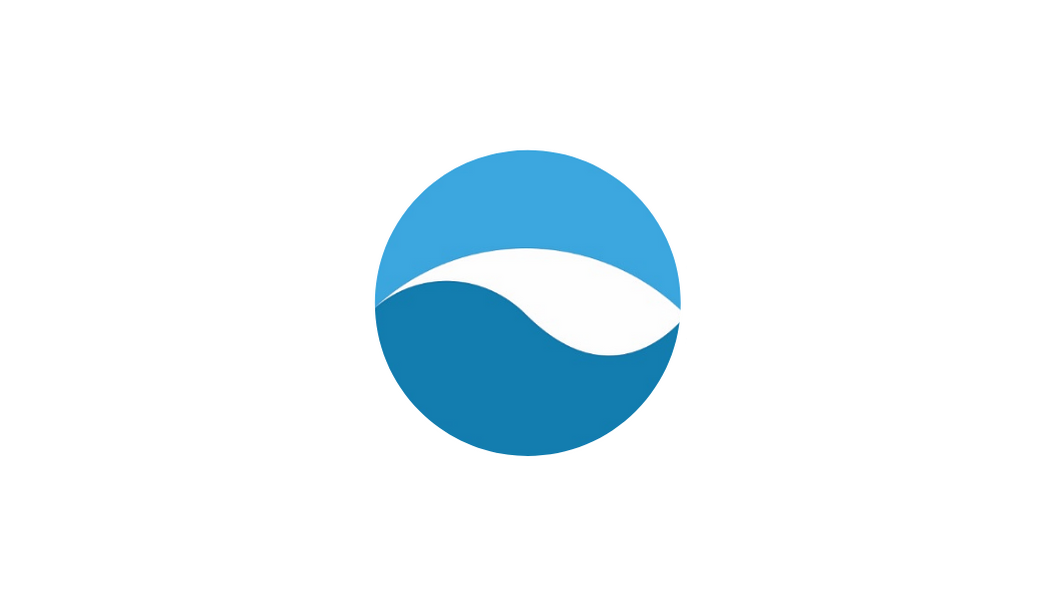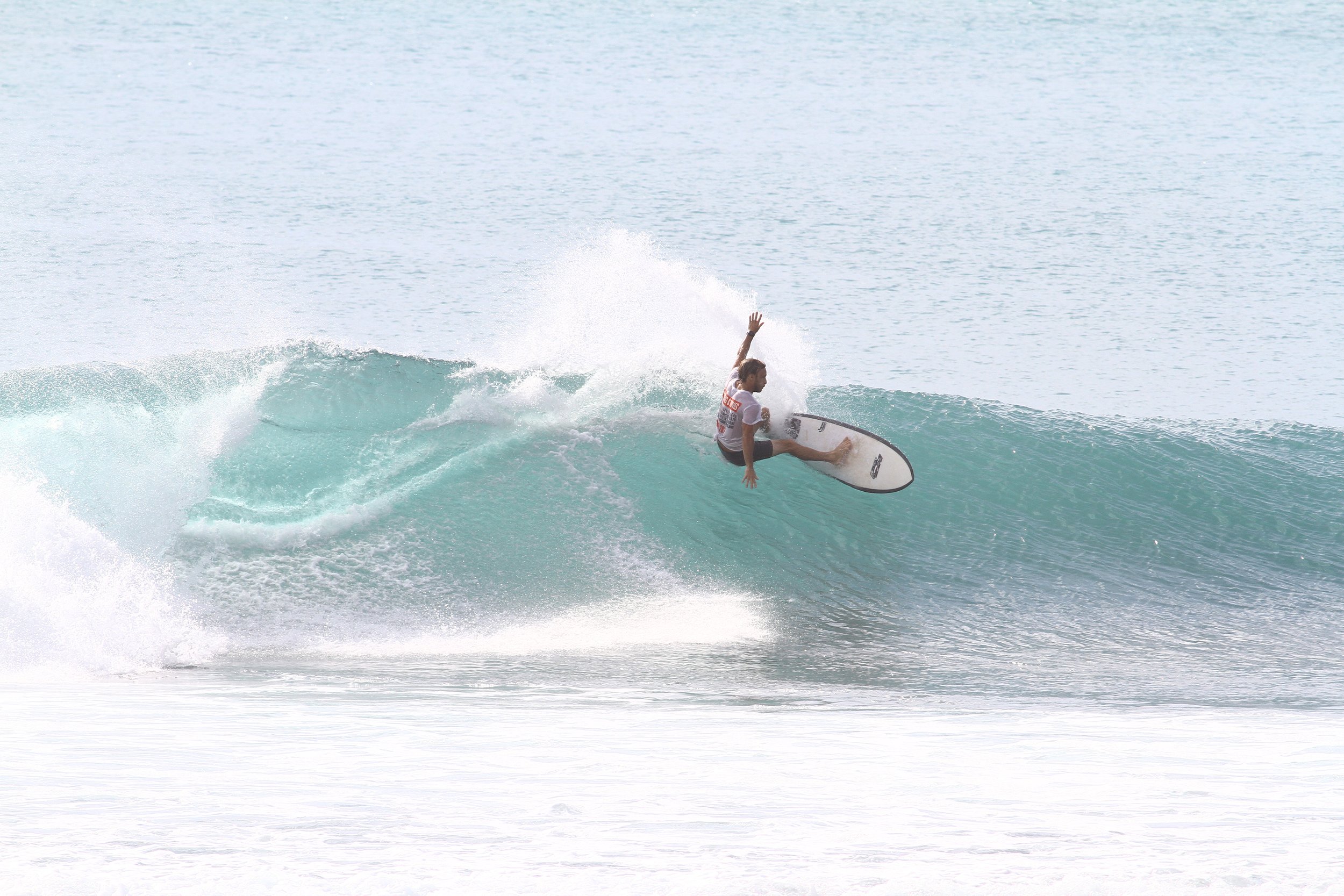Out of all the surfing tips we can give you, this is perhaps the most important.
It goes without saying that after your first surf lessons, you'll want to catch waves breaking beyond the whitewash (a.k.a. green waves).
Naturally, seeing these waves peel and watching surfers ride green waves with style and composure is alluring. But actually reaching the lineup in order to surf these waves yourself is a whole other story.
Novice surfers, listen up. If you want to catch waves with more experienced surfers but avoid getting in the way of anyone, this article is for you.
Save yourself from committing surfing faux pas (or worse) having an accident. Check out our article on reaching the lineup safely.
What is a "lineup"?
The term "lineup" refers to the area in the ocean where surfers wait for and catch waves.
Every surf spot has a lineup that other surfers adhere to. In a perfect world, the lineup operates like a conveyor belt, with the surfer closest to the peak of the wave catching it first, followed by the next surfer in line and so on.
Surfers enjoying a moment together in the lineup, patiently waiting for the perfect wave to catch.
You'll hear the term lineup throughout your surfing journey. It's one of the most critical elements to understand for your own safety and that of other surfers surfing near you.
How do I locate it?
Advanced surfers will tell you that the lineup is a constantly moving target. It changes depending on surf session factors like the tide, swell direction and size, wind direction and current.
For beginners, however, it's easier to identify the lineup by looking for where a cluster of other surfers are crowded around a consistently breaking wave. Think about it like the main surf zone, where most surfers are waiting for and catching waves.
A surf school lesson or surf coach will be highly adept at locating the lineup on your behalf and pointing you in the right direction. However, if you're learning to surf on your own, our advice would be to observe other surfers and take note of where they’re positioned in the water.
Why is reaching it safely important?
Because the lineup indicates a point where other surfers are taking off on waves, reaching it safely is important so as not to impede more experienced surfers.
Additionally, the lineup is often situated at a point where the waves are breaking more consistently and with greater power, making it a potentially dangerous area for learners who may not have complete control of their surfboard or be able to navigate through crowded waters.
Waves, whether soft waves or steep waves, are powerful forces of nature. Throw the unpredictable nature of other surfers into the mix and you can imagine why reaching the lineup safely is so important.
Can I learn to reach a lineup safely by myself?
Surfers timing their movements through the whitewash, ready to paddle out to the lineup and catch the next big wave.
Of course!
With the right training, ample surf lessons and even a few practice surf trips, you can learn how to reach the lineup safely on your own. Having the right beginner surfboard and being confident in your swimming abilities are other factors to consider.
The type of surf spot you're surfing will also make a difference. Some surf spots have a more gentle, beginner-friendly reputation while others can be more challenging with powerful waves.
Again, booking a surf lesson or hiring a surf coach is the way to go. You'll essentially be hacking your learn to surf journey and getting valuable feedback that can't be gleaned from an online forum or social media post.
9 surfing tips for making it out the back safely and responsibly
Tip 1 / Educate yourself by booking a surf lesson
Beginner surfers will need to book surfing sessions with an experienced teacher – there's no two ways around it.
Any attempt to simply "wing it" or learn from a friend who isn't qualified may result in injury and frustration for yourself and others. You're dealing with the ocean and other surfers surfing near you, so investing in a surf lesson is an investment in safety for all.
Tip 2 / Observe the lineup from the shore before paddling out
Can you see where the lineup is from the shore? Is there a cluster of people at this particular surf spot? Do the waves break more consistently in a certain point?
If so, the lineup is in that general vicinity. Take a moment to observe these factors before getting in the water.
Tip 3 / Identify a clear path for paddling out, avoiding any surfers already riding waves
A surfer prepares for an incoming green wave, while her friend watches from the lineup after expertly navigating the swell.
Once you've spotted the lineup, it's time to paddle out.
Surfing safety and surf etiquette rules dictate that you should never paddle through a wave where surfers are riding. Instead, identify a clear path to paddle out without getting in the way of other surfers.
This means paddling around, not straight through, the main area where surfers are taking waves.
Tip 4 / Leverage channels to make paddling out easier
Channels are areas of water that are deeper and calmer, making it easier to paddle out without battling through heavy white water or breaking waves.
To spot a potential channel, look for a spot where waves aren't breaking or where the water seems more calm. This is an indication of a deeper section of the ocean where it’s easier to paddle out.
Tip 5 / Remain vigilant and always be aware of other surfers in the water
Your surfing journey is all about exploring new surf spots, catching waves, enjoying a surf session with friends and progressing past beginner surfers. But there's only so much you can control.
The rest is up to the ocean and other surfers.
Always be aware of your surroundings and watch out for other surfers near you. If someone is paddling for the same wave as you, communicate with them to determine who has priority and avoid potentially dangerous collisions.
Tip 6 / Avoid floating into the impact zone
A common error of beginner surfers is that they paddle or float into the impact zone, so called because that's where waves are breaking with the most force.
The impact zone is essentially the focal point of all the waves of that surf session. Consequently, it's exactly where you don't want to be when paddling out.
Beginner surfers should be extra mindful of their positioning in relation to the impact zone and avoid getting caught by breaking waves, run over or pushed back to the beach.
Tip 7 / When in doubt, take a wider berth
Worried or outright panicky that you're about to paddle out into a crowded lineup?
Don't stress. When in doubt, take a wider berth than usual to avoid your fellow surfers. Even surfers in the 'advanced surfing' category opt for safety over ego when they're challenged. It's the smart way to surf.
So, if you're nervous about navigating a big board, your turtle roll technique or whether you'll be in the way, relax and paddle out further down the beach where it's safer.
Tip 8 / Only stop paddling once you're past the impact zone
They say surf sessions only begin once you're in the lineup, and if that's true, you probably want to make it there as quickly and safely as possible.
Only stop paddling once you're past the impact zone or area where waves are breaking with great force. Whatever you do... don't pause to admire the view before you're safely past the waves.
That said, we understand that the average beginner surfer might not have the paddle power to reach the lineup as quickly as possible. This is where proper paddle technique comes in.
Learn how to paddle a surfboard more efficiently.
Tip 9 / Pause, consider your surroundings and collect yourself before attempting to catch a wave
Head surf coach Rosie demonstrates Tip 9: Pause, consider your surroundings, and collect yourself before catching a wave during a private lesson.
Finally! You've made it to the lineup and are ready to catch your first wave.
Before attempting to do so, take a moment to pause, consider your surroundings and collect yourself. You've most likely just expended a ton of energy and are probably feeling fatigued.
Now that you're past the other surfers and beyond the impact zone, you can take a moment to catch your breath and get ready for the next step.
Catching a green wave!
Final thoughts
The surfing lifestyle is great for anyone learning to surf. And catching waves with new or old friends is one of life's simple pleasures. That said, surfing sessions aren't all Chupa-Chups and rainbows -- if you're learning to surf, you must do so responsibly.
Ensure you have the proper equipment. Book a surf trip with more experienced surfers. Learn the difference between the right surf spot and the wrong one.
By taking all this into account, we guarantee more fun, many waves and that all surfers stay safe.
























